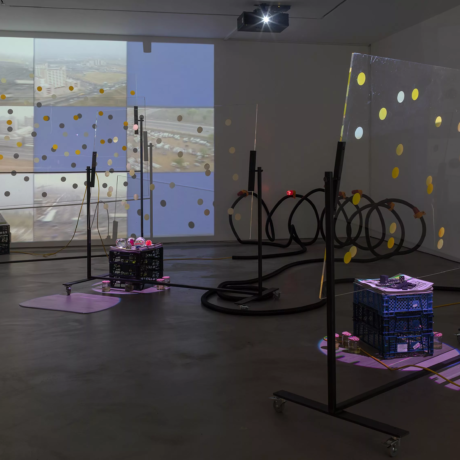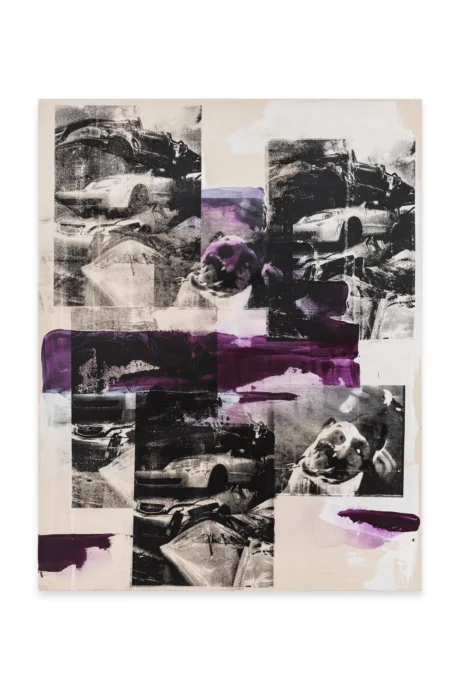Exhibiting new and evolving works that deal with site and space, the artist Rahima Gambo examines the complex history of her fabricated home city.

In Gasworks Gallery Two, you will find a glowing sigil extruding from a floor-wide pile of soil. Upon closer inspection, the sigil, glowing white from beneath dirt and stone, depicts an aerial view of Abuja, man-made capital of Nigeria. Each line, each glowing arc, is traced by finger, like marks in the sand. Of course, all cities are man-made, but some more so than others.
Rahima Gambo, tracer of the sigil and the artist behind Alternative Central Area Locations – exhibiting at Gasworks 13 June – 8 September 2024 – was raised in Abuja. We’re standing over the traced sigil of her hometown.” The light comes up from the ground. I’ve been thinking about the urban plan itself, the plan as a projected picture, and the ground as the screen the picture is projected onto,” she tells me. Behind us, computer fans housed in metal boxes silently whir, false wind flows over a false city. “Something happened with these two works, when put together,” she says. “Having the two works face each other became this whole ecosystem of air, light and soil,” she says. “So much of urban planning is about the language of topography and climate, those two things trying to control human habitation…what does it mean to have an idealised projection, protruding from the dirt?” Gambo ponders. She becomes city planner on a micro scale. “It’s physically enacting, the labour of moving, pushing, tracing soil around to create the image. That’s what city building is, that’s what planners do: they move soil around, create an image.”

As Gambo grew up, so did Abuja. A “planned city,” the new capital was constructed throughout the 1980’s. Taking the title of capital from Lagos in 1991, the city was designed and built by a five-headed conglomerate of American firms, known collectively as the International Planning Associates. The IPA decided that Abuja would be built on the Gwagwa plains, a site over 800 km away from Lagos, due to its central locality and apparent ethnic neutrality. In Alternative Central Area Locations, Gambo exhibits new and evolving works, many of which developed in situ in response to Abuja, Gasworks itself, and the building works that flank the Oval gallery. Gambo’s conceptual installations, sourcing archival materials from the Nigerian Television Authorities video library, attempt to make some sense of the city, and by extension, the artist’s relationship to home.
The curatorial process mirrored Gambo’s central concerns: Who gets to plan? Who is the plan for, who does it serve? What gets left out, and who gets lost in the margins of architectural renderings? A city is a living thing, an infinitely complex nervous system composed of disparate, inharmonious elements. What does the system become when built in one fell swoop, by a handful of like-minded minds? Abuja wasn’t allowed to develop organically, but was grown in a lab, designed with clear intention, a deadline. Who omits, selects, regulates and controls? Who, and what, is the city for?
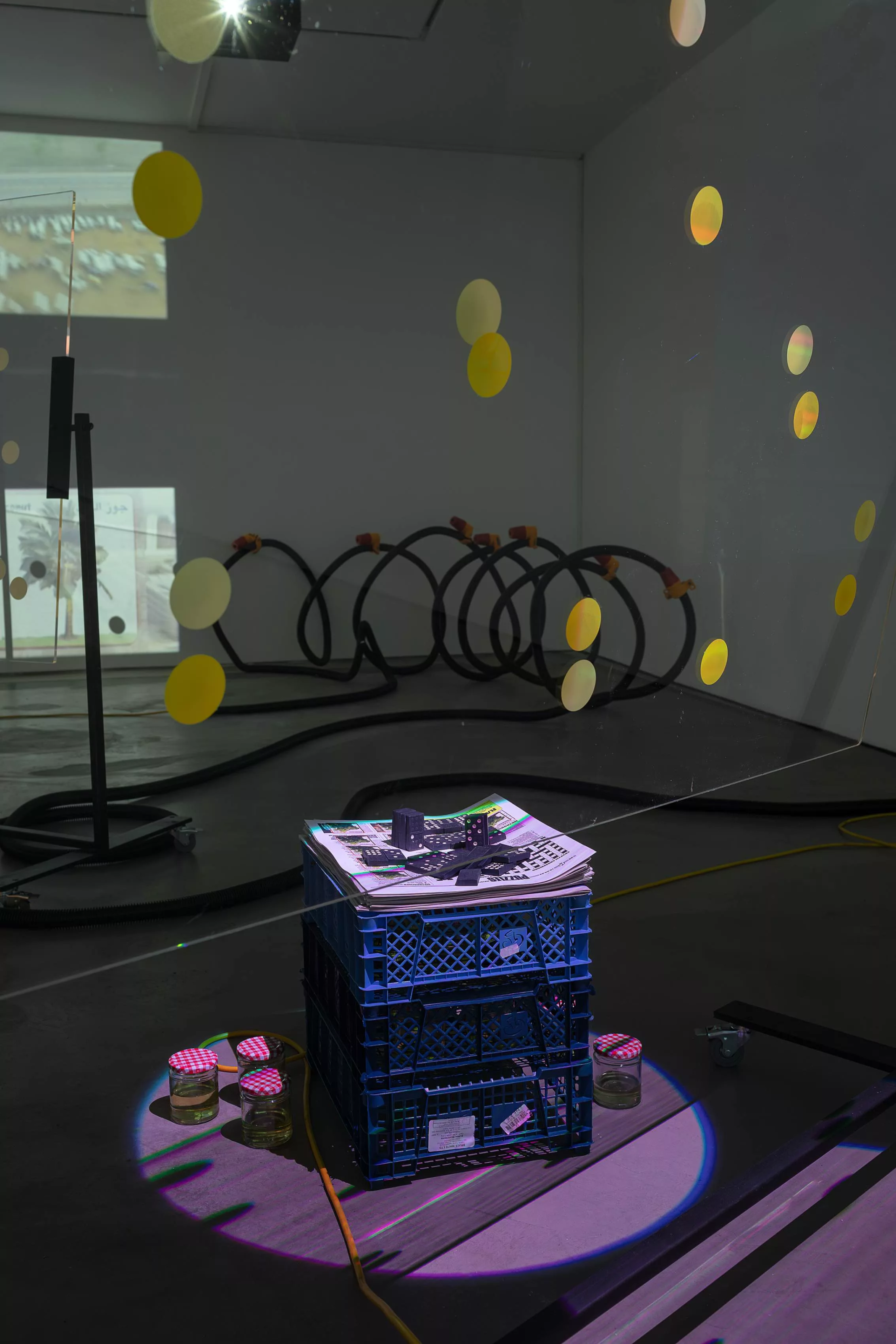
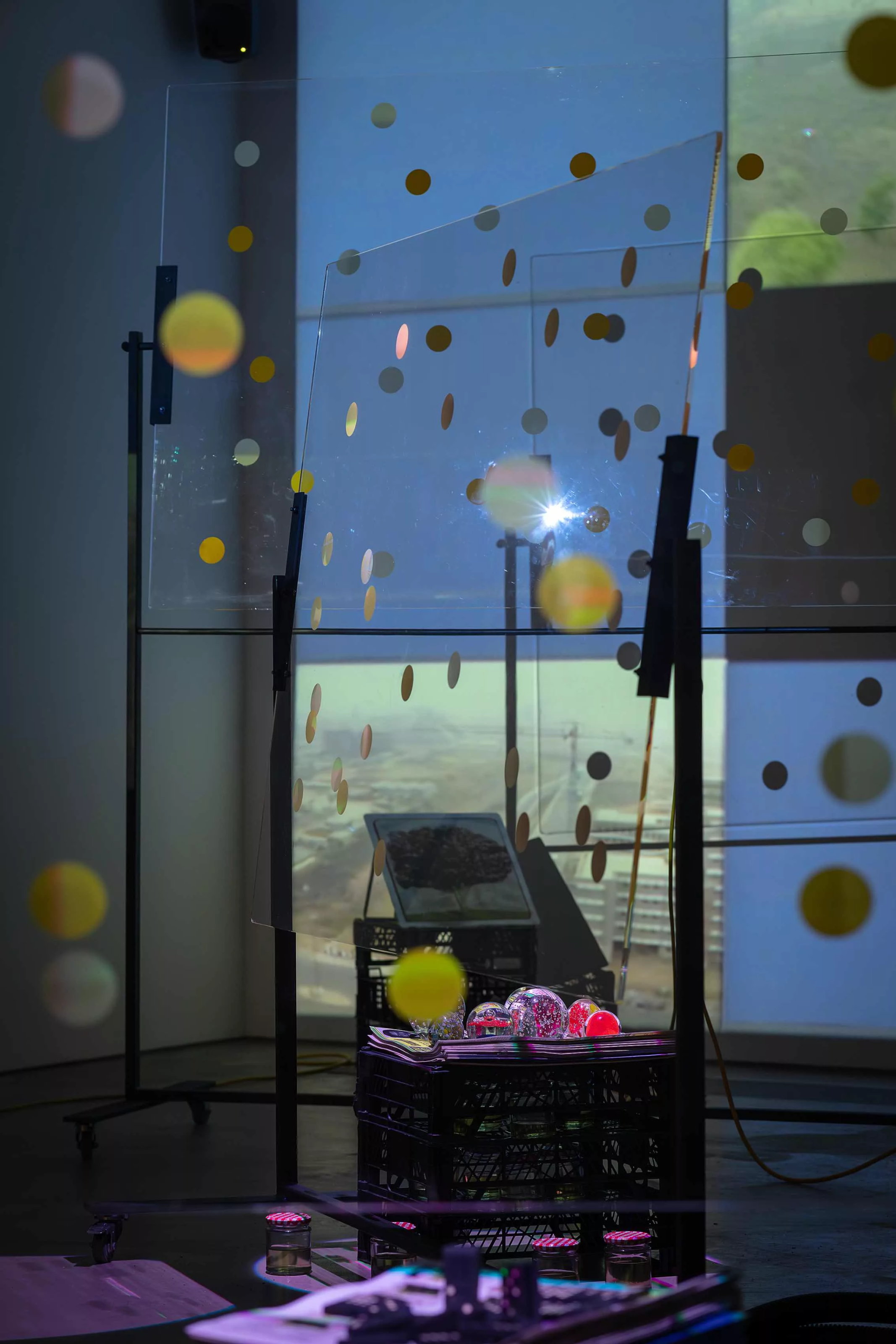
In our discussion, we find semantic chimes and rhymes between the language of curatorial production and urban planning: a prime mover controls space, determining engagement between people and the spaces they find themselves within. It is a role with power and control, the ability to demarcate, include, exclude. The environments we exist within don’t just control us, but create us; we are products of our surroundings. This begs the question: who is making me?
For Gasworks Curator Rosa Tyhurst, these chimes demanded “a completely new way of working.” This insight brought her to “think of planning cities, of planning spaces, exhibitions… where people congregate, where people have ideas, where people commune.”
“We’re used to things being a little more formulaic,” Tyhurst explains. Many of the exhibiting works were born specifically and especially for the exhibition, an understanding of the space required before planning and building could begin. Utilising archives, found objects and an internal catalogue of thoughts, feelings, and memories, Gambo’s art exists within her head far before it physically manifests. It was impossible for Tyhusrt to check out Rahima’s studio and select a handful of works to be displayed within Gasworks. The pieces did not exist, or, they did not exist as physical assemblages – yet. Gambo was literally given the keys to the gallery and the freedom to commune with the space long-term, familiarise herself with the site, the land. The artist’s unique and pinpoint-specific perspective is the work, the physical installation a subsequent manifestation. In many ways, Abuja is an artistic concern a lifetime in the making. “I start at the edge of my own knowing: selecting these things, and how they engage with me and others,” the artist says.
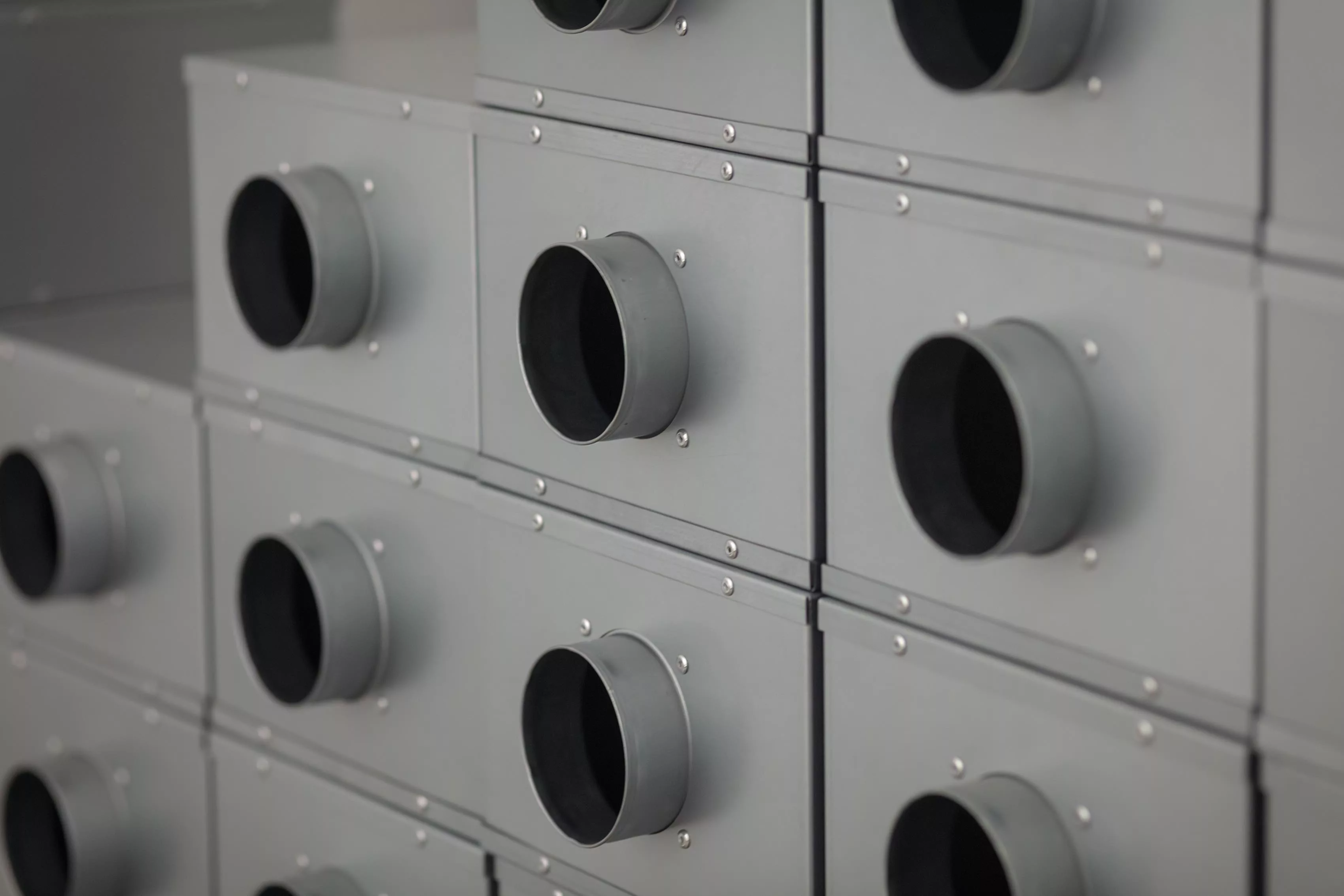
Gambo describes many of the works as “Moving image…and moving around the image.” She cut her teeth in documentary before developing a more conceptual, roving installation-based practice. “Documentary, at its heart, is conceptual,” she states. This can be seen in her application of archival materials: aerial shots, renderings, everyday Nigerian items such as Dominoes and newspapers. Though speculative and introspective, she is grounded by realities.
As we speak on the Gasworks office balcony we watch neighbouring construction workers move soil, lift diggers in the air, and slowly, conjure a building. The soil featured in Gallery Two was sourced from this very site. Gasworks extends the exhibition beyond the two galleries, with one final work existing somewhere amongst this building site. Gambo devised this final work, Cement Armada, to be inaccessible to the public. It appears on the list of works, yet falls off the exhibition floor plan. Cement Armada becomes myth, story, gossip. The audience can never see the work, digest it in classically understood ways. It becomes oral history, something beyond the map. Once again, power and spatial control are at play, elements of the city out of purview, accessible only for the select few.

“The artwork itself is made up of 50 ‘paperboats’ made up of a collage of Nigerian cement bags,” Gambo tells me. “I was interested in the idea of folding paper into a three-dimensional object that could easily take up space in a playful way, but could be folded back up and put away. I wanted to activate the peripheries of Gasworks, drawing lines between the outside and the inside of the exhibition… I imagine the work as an intervention that exists in the edges of the show, taking on a second life as a myth or memory, always at the risk of being forgotten. I wanted to anchor the work in a sort of site and time specificity, where the shape and form of [Alternative Central Area Locations] would be porous and flexible enough to include work and information about its current environment.”
“[The exhibition] has always been about this relation to the center, the relation of Abuja to the colony, to the UK, in relation to my body in Abuja, but also my body being here in London… I am always trying to orient myself to the center, and then, being here, I realised that it’s important to acknowledge what is in the periphery,” Gambo adds. “That’s something that I’ve always been interested in: missing works, lost works, works that exist in fragments or ruin.”

With any city, you’re allowed into some of it, but you’ll never be allowed into all of it. The demarcation becomes the definition. You’ll never control all of it. You’ll never understand all of it. The same goes for Alternative Central Area Locations. You can’t ever see the whole picture, nobody can. Balancing archival documentary with personal rumination, Gambo is not the captain of the ship, but another passenger, riding the wave and seeing where it takes her. This is her Abuja, one built on an artistic practice and peripheral understanding afforded from London life. She’s looking back in, making sense of the plan, widening the gaps between.
In a similar fashion to the urban plan being a two dimensional representation of a three dimensional reality, the exhibition was never going to contain all the information. All cities are myth, but some more so than others. Inversely, the city can never truly fulfil the promise of its plan.
“You know, I think sometimes I can see Abuja really clearly, and sometimes it’s like, I’m lost in the fog of remembering the place. It’s very illusory, it changes,” she explains. Gambo now calls London home. “I think it’s like dealing with a memory, or like a myth of a place. What is really true about it, you know? Trying to piece together what is actually true about that place, and by extension me. My identity, my self, in relation to that place.”
Written by Isaac Huxtable
Alternative Central Area Locations is on display at Gasworks 13 June – 8 September 2024.
find out more